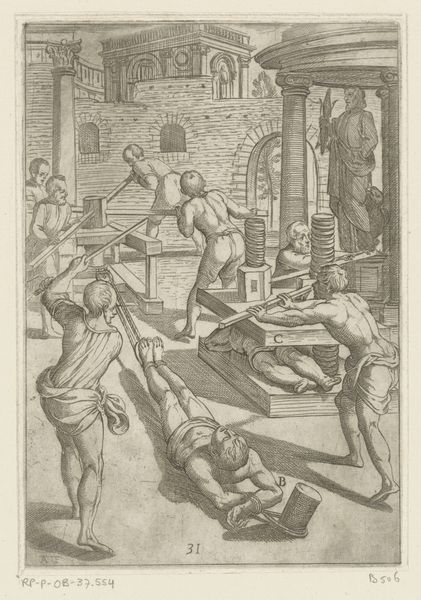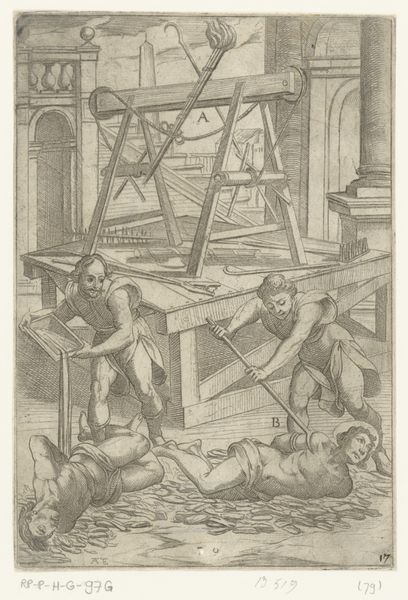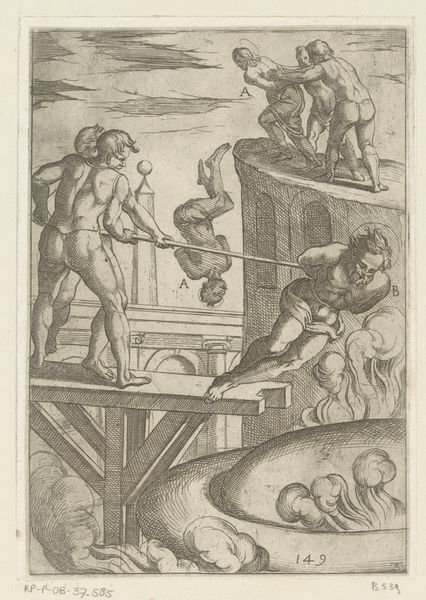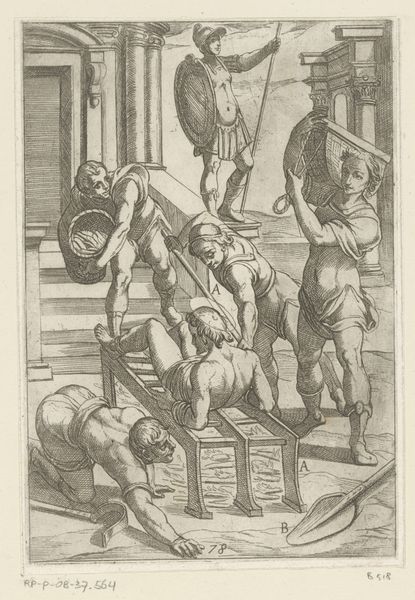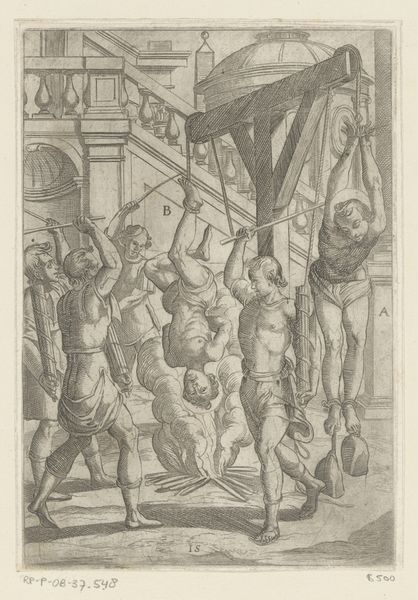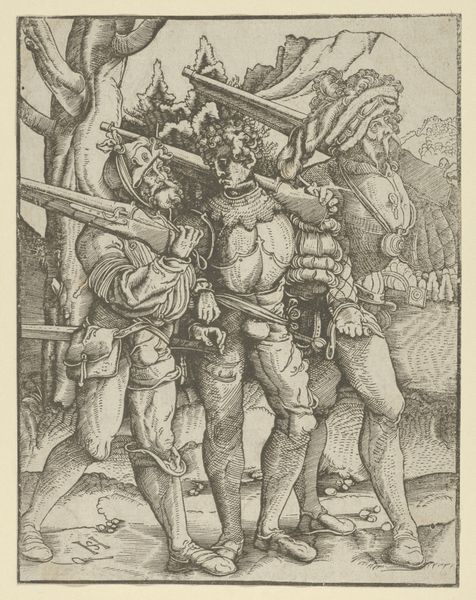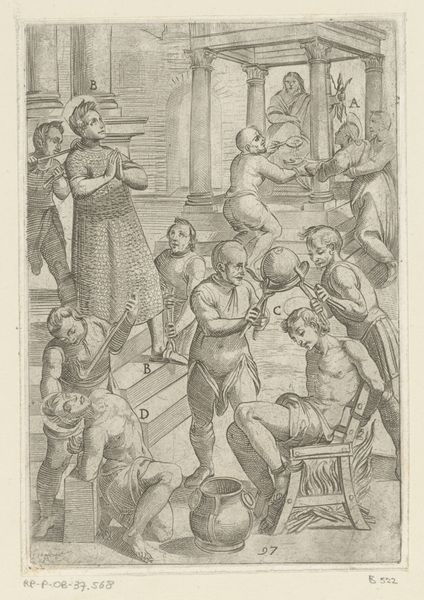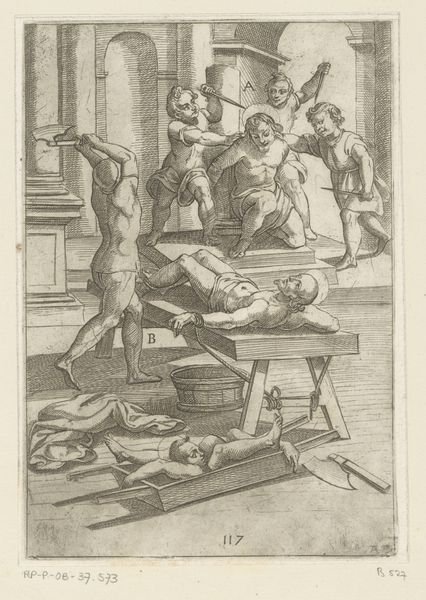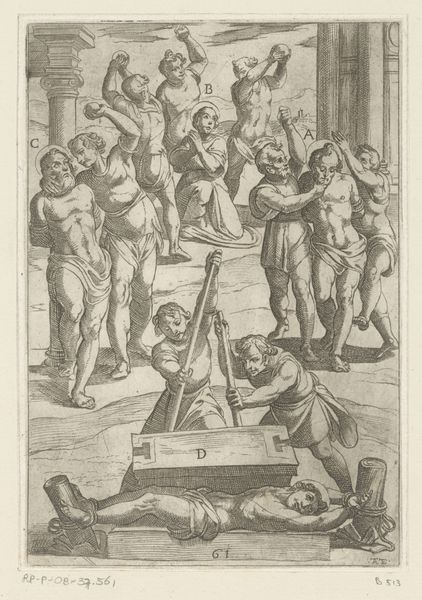
print, engraving
#
narrative-art
# print
#
mannerism
#
figuration
#
history-painting
#
engraving
Dimensions: height 194 mm, width 133 mm
Copyright: Rijks Museum: Open Domain
Curator: At the Rijksmuseum, we are fortunate to have Antonio Tempesta's striking print, “Foltering: Ophanging en verbranding,” dating roughly from 1565 to 1630. Editor: Well, striking is certainly one word for it. The composition alone is aggressively vertical. The image plane is completely packed, creating an overwhelming sense of dread. Curator: Precisely! Tempesta, working in the Mannerist style, achieves this tension through the stark contrasts of light and shadow, characteristic of engravings, alongside a theatrical, complex arrangement of figures in motion. Note how the eye is led from one point of agony to the next. Editor: True, and the historical context is paramount. Religious conflicts were exploding during that period. The brutal execution methods that are meticulously captured likely served a dual purpose: intimidation of dissenting voices, as well as reinforcing the legitimacy of the ruling powers. The formal staging is an element that also reminds me of classic historical prints, reinforcing authority through dramatic display. Curator: It’s a perfect intersection of form and function, then. The dynamism Tempesta conjures from the etching is undeniable. He organizes distinct acts of torture happening simultaneously on two platforms, joined by that gruesome figure in the foreground. A, the first stage. B, where death concludes the narrative. And each character so intentionally designed. Editor: Indeed, the print powerfully conveys the horrors and trauma inflicted on vulnerable bodies, prompting crucial dialogue about the consequences of intolerance and violence within social frameworks. Considering how such imagery functioned as political propaganda, its continuing ability to stir reflection feels quite paradoxical. Curator: The lasting relevance of Tempesta’s piece resides in this duality—both an artifact from the past and a warning for the present, carefully articulated via lines and visual construction. Editor: An articulation of a cautionary message still resounding across centuries of human history, visually etched and printed into collective consciousness.
Comments
No comments
Be the first to comment and join the conversation on the ultimate creative platform.
